Define an ADT for a sequence of integers remember that a seq
Solution
#include<iostream>
#include<stdlib.h>
using namespace std;
/*
List ADT Implementation for Integers
Supports: Duplicates values and position based access.
Change in membership of postion.
check size, availability in set.
Can be resized automatically based on requirement of size.
*/
class Arraylist
{
int *integerArray;
int length;
int size;
public:
Arraylist(int defaultsize = 10)
{
integerArray = new int[size];
length = 0;
size = defaultsize;
}
// To get integer at index i
int get(int index)
{
if(!IsIndexValidated(index)) {
cout<< \"The index is invalid\";
return -1;
}
return integerArray[index];
}
// To get array length
int lengthOfArray()
{
return length;
}
// To set integer at index i
bool setAtIndex(int index, int value)
{
if(!IsIndexValidated(index)) {
return false;
}
integerArray[index] = value;
return true;
}
// To add integer in the list
bool add(int value)
{
expandArrayIfrequired();
integerArray[length++] = value;
return true;
}
// To remove integer in the list by index
bool remove(int index)
{
if(!IsIndexValidated(index)) {
return false;
}
for (int i = index; i < length; i++)
integerArray[i] = integerArray[i+1];
integerArray[length-1] = 0;
length--;
return true;
}
// To check the availability of value in integerArray
bool isValuePresent(int value)
{
for(int i=0;i<length;i++)
if(integerArray[i] == value) {
return true;
}
return false;
}
// To print all the values in the list.
void printList()
{
if(length==0){
cout <<\"None\";
}
for(int i=0;i<length;i++)
cout <<integerArray[i]<<\" \";
cout<<endl;
}
private:
bool IsIndexValidated(int index){
if(index<=0 || index>=length) {
return false;
}
return true;
}
bool expandArrayIfrequired(){
if(length >= size) {
int* resize_arr = new int[size *2];
for(int i = 0; i < size; i++)
resize_arr[i] = integerArray[i];
size++;
integerArray = resize_arr;
delete[] resize_arr;
return true;
}
return false;
}
};
//Main method to test ArrayList
int main()
{
Arraylist list(1);
cout<<\"Array List of size 1 created\"<<endl;
cout<<\"Display list\"<<endl;
list.printList();
cout<<\"Adding 2 and 3\"<<endl;
list.add(2);
list.add(3);
cout<<\"Display list\"<<endl;
list.printList();
cout<<\"Get Value at index 1\"<<endl;
cout << list.get(1)<<endl;
cout<<\"Get Value at index 2\"<<endl;
cout << list.get(2)<<endl;
cout<<\"Adding 6 and 10\"<<endl;
list.add(6);
list.add(10);
cout<<\"Length of Array\"<<endl;
cout << list.lengthOfArray()<<endl;
cout<<\"Display List\"<<endl;
list.printList();
cout<<\"Remove from index 1\"<<endl;
list.remove(1);
cout<<\"Display List\"<<endl;
list.printList();
cout<<\"Does value 10 present in array\"<<endl;
cout << list.isValuePresent(10) <<endl;
cout<<\"Set index 1 value as 100\"<<endl;
list.setAtIndex(1,100);
cout<<\"Display List\"<<endl;
list.printList();
return (0);
}
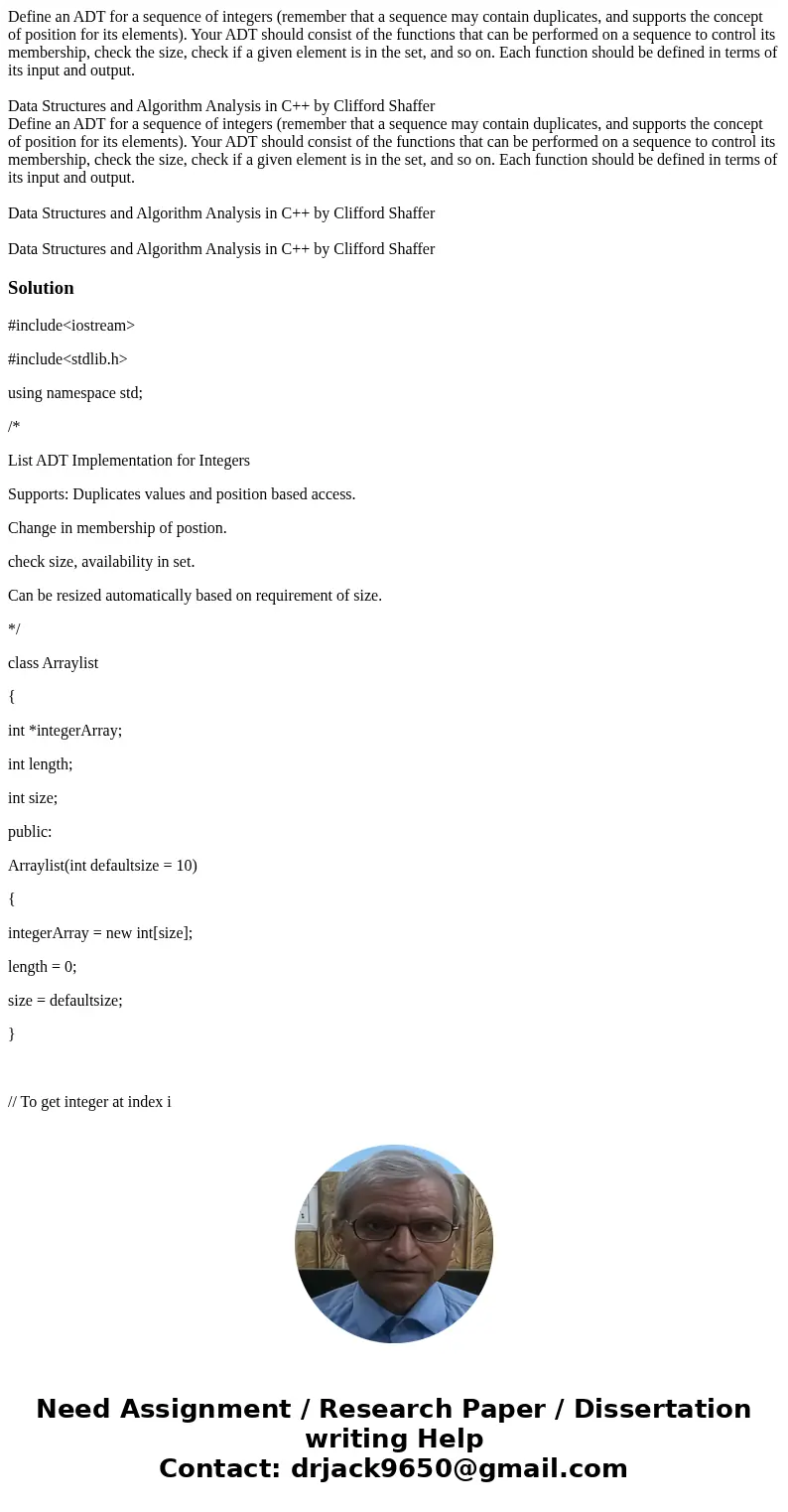
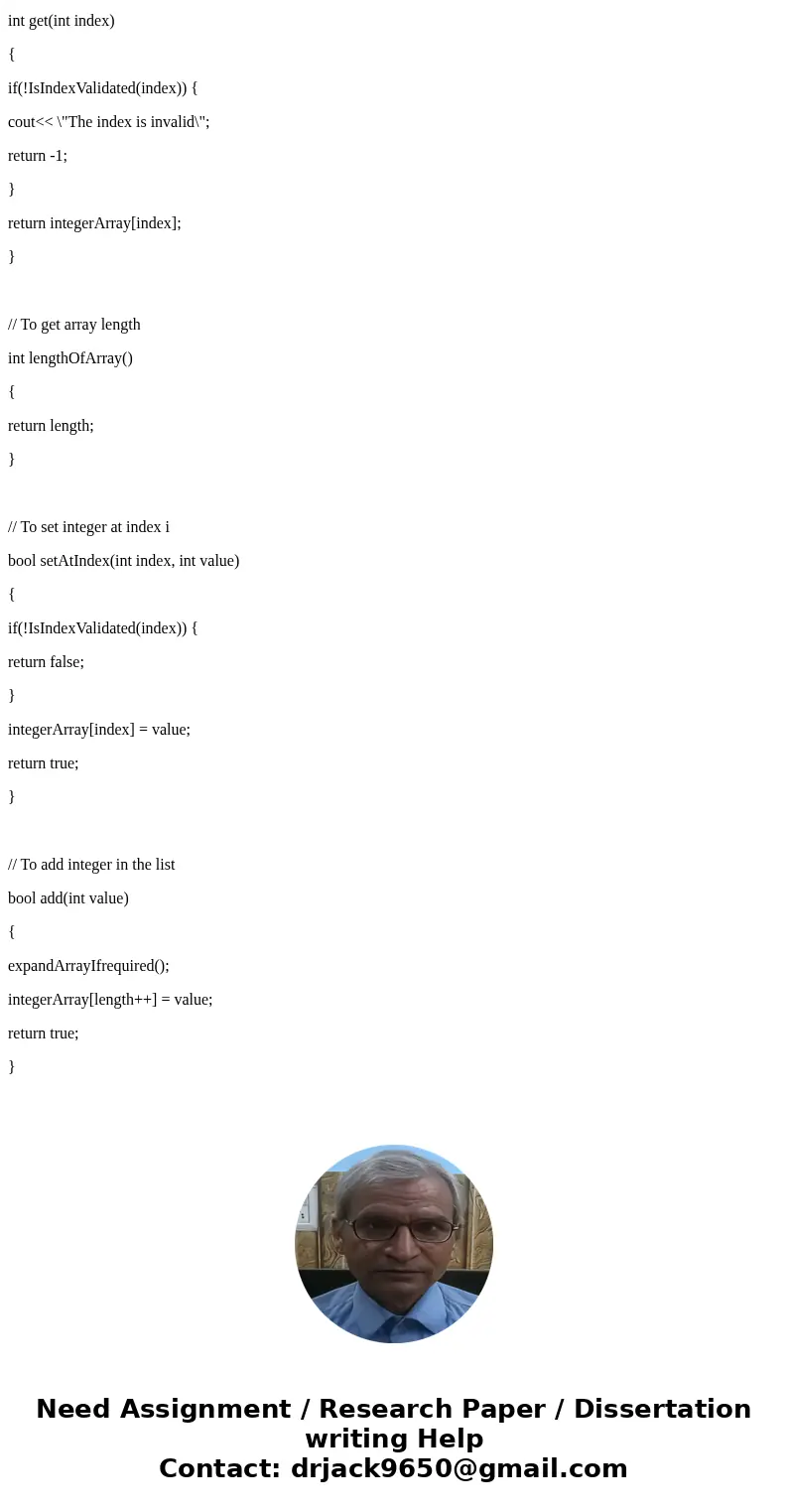
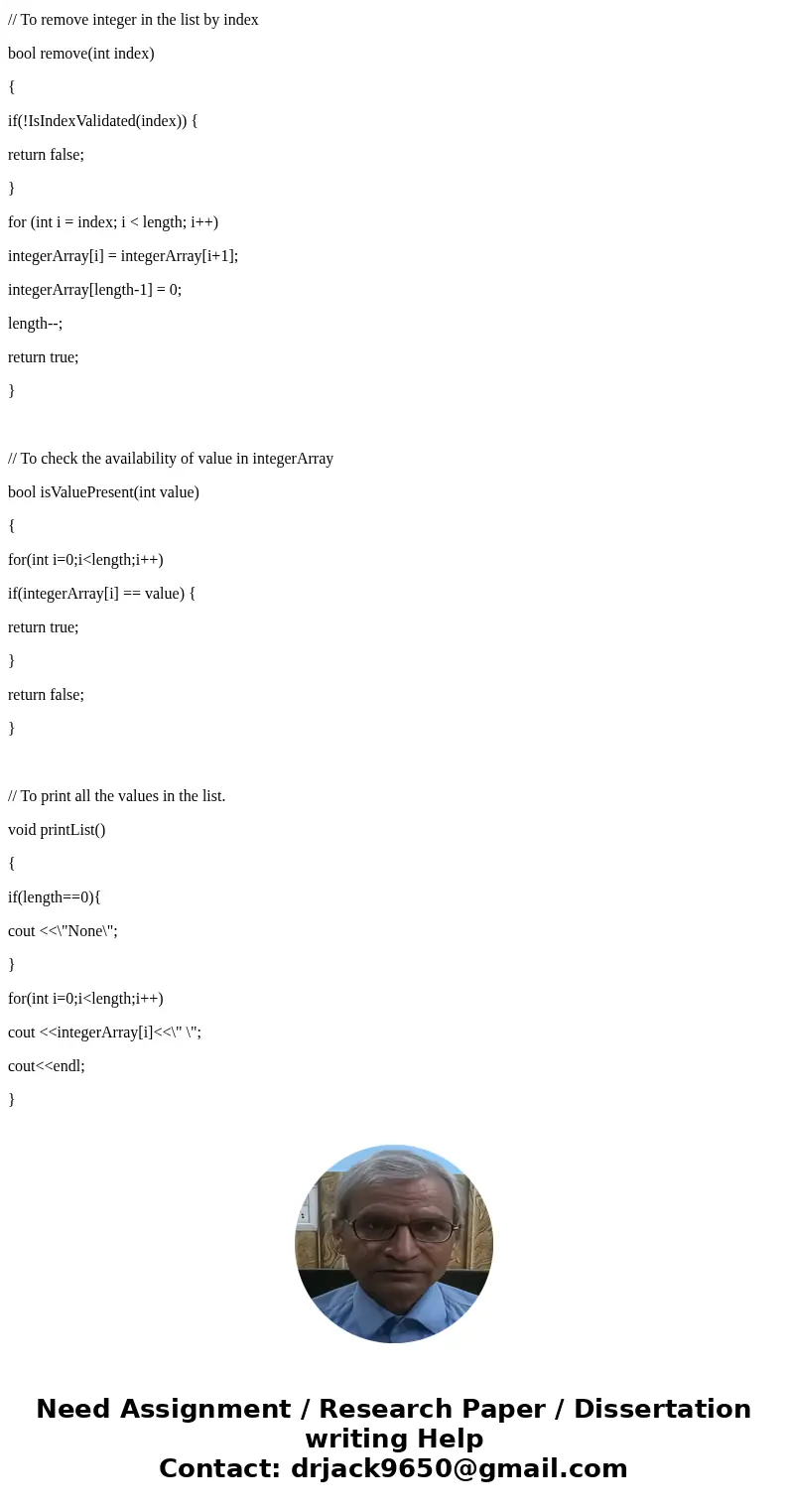
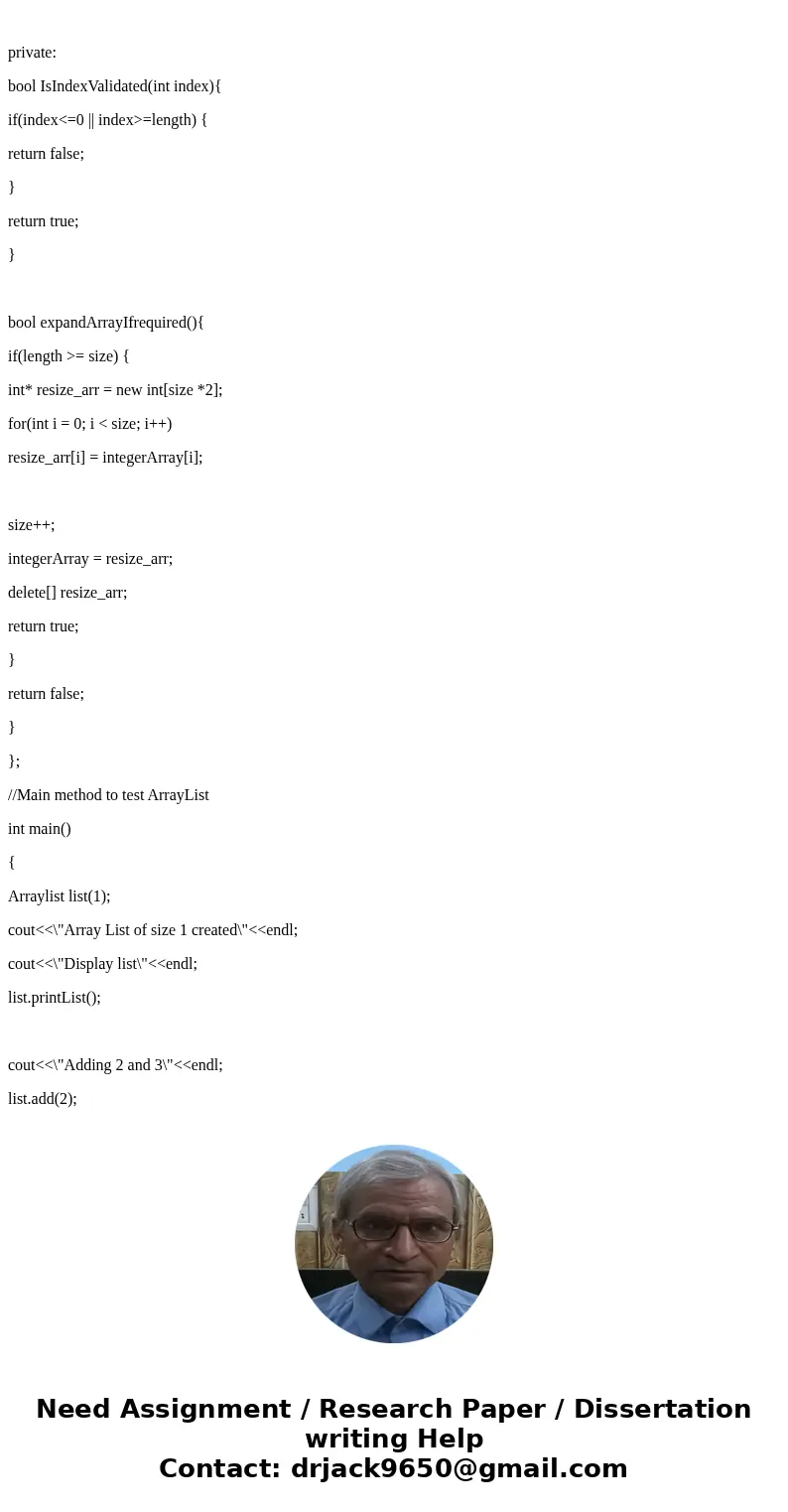
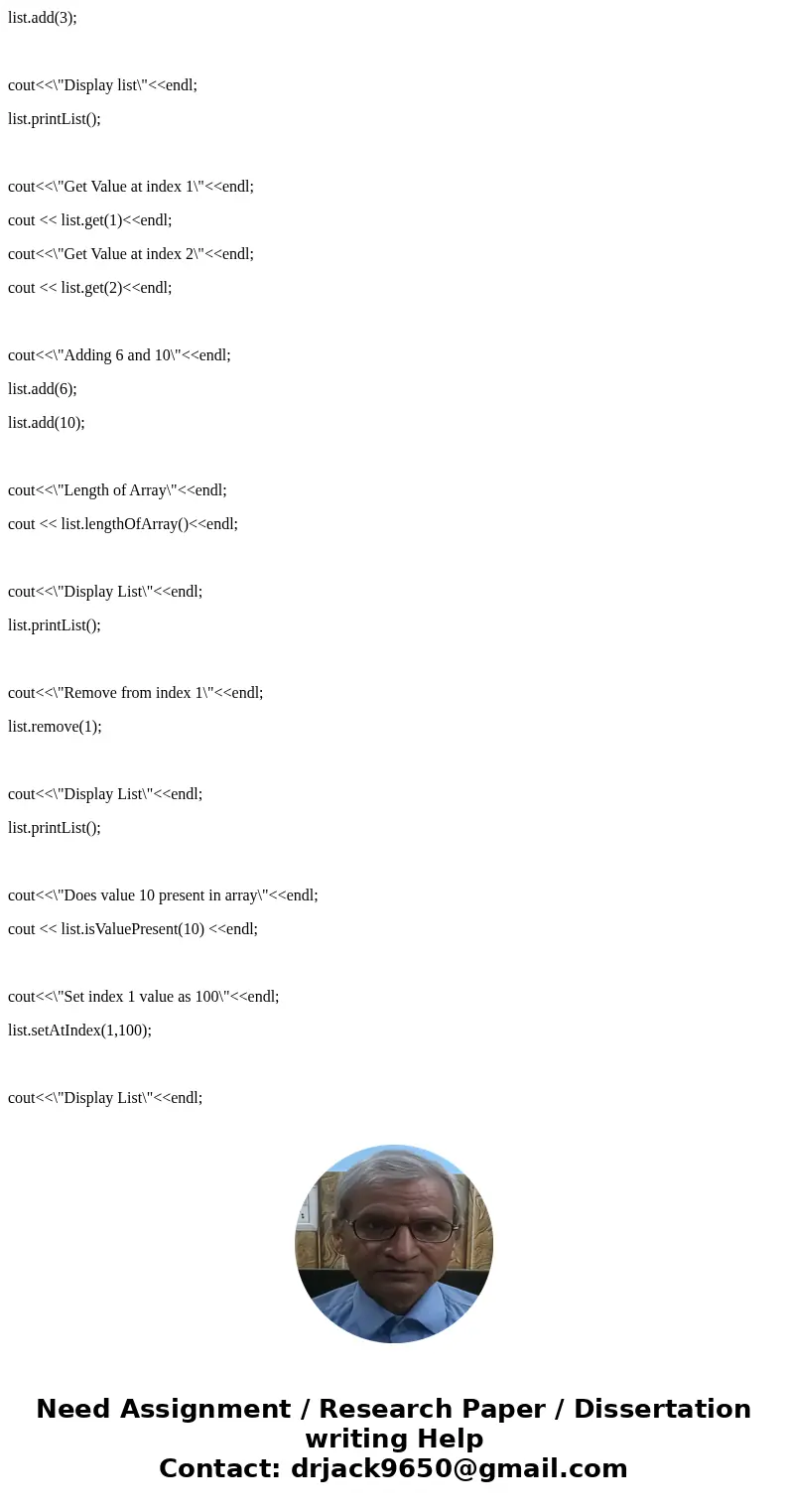
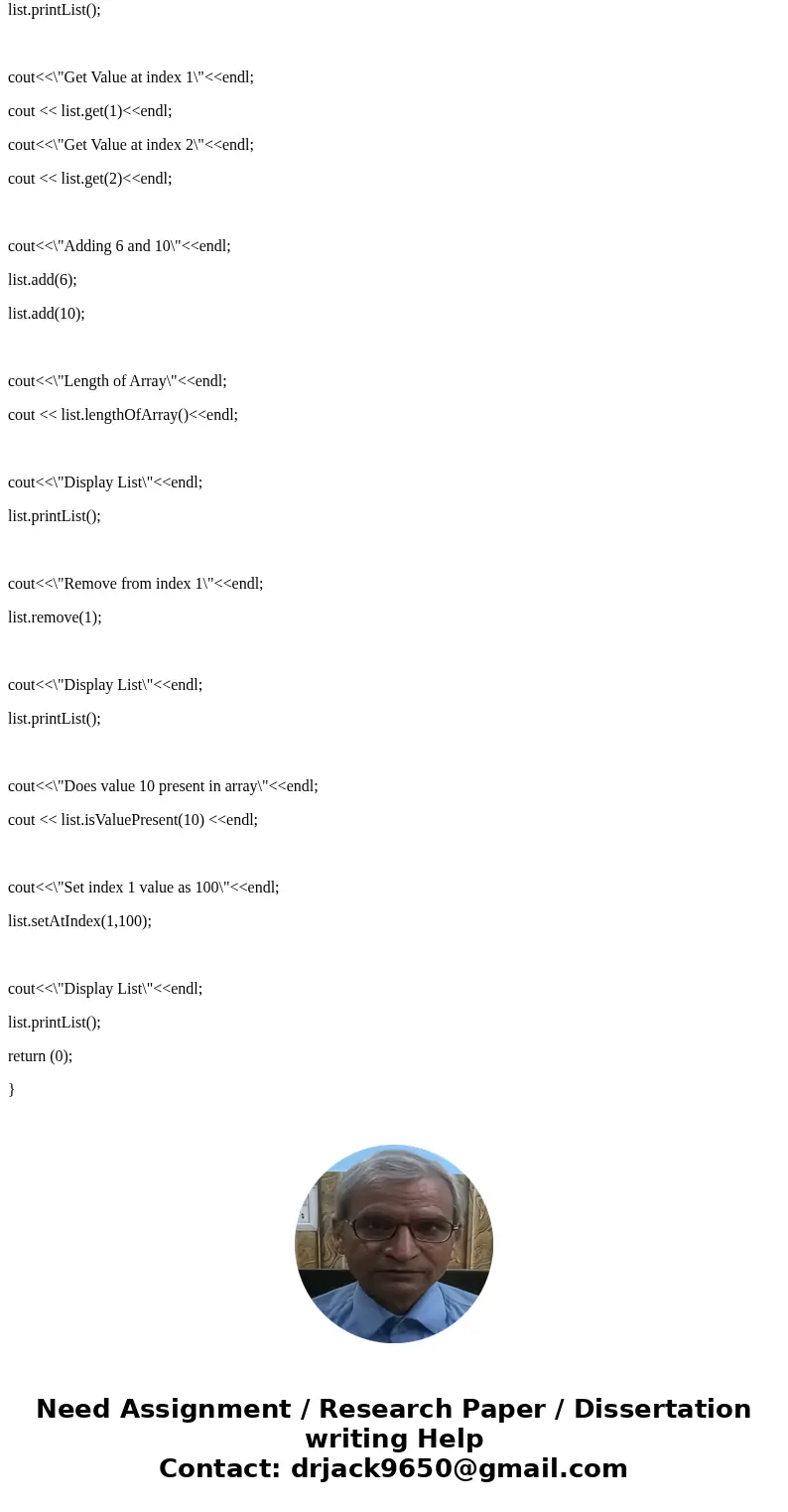
 Homework Sourse
Homework Sourse